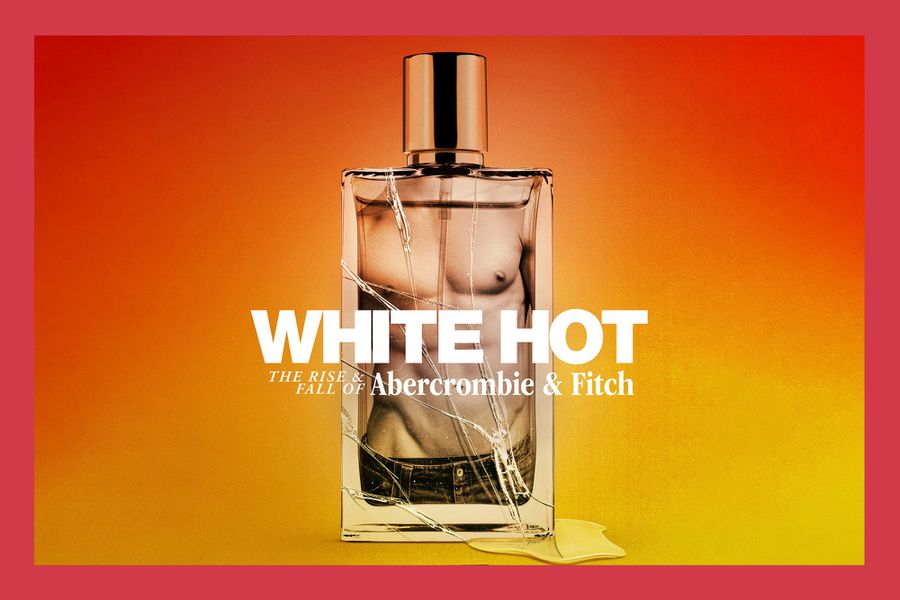
If you were a teen or young adult in the '90s and early aughts, there's a good chance you might have some strong feelings about Abercrombie & Fitch. The clothing brand — instantly recognizable in any mall across America by its dark stores, inescapable music, strong musky fragrance, and risqué ad campaigns — once defined a "culture of cool" for young people. But a new Netflix documentary is shedding light on how that culture was built on discriminatory practices designed to exclude shoppers and employees alike who didn't fit a specific ideal (i.e. thin, white, and wealthy). Watching the doc is a reminder of how detrimental narrow beauty standards advertised by fashion brands were (and still are) to people's self-image and mental health and why brands have a responsibility to do better. (
The documentary, White Hot: The Rise & Fall Of Abercrombie & Fitch, includes interviews with former corporate and store employees. Many share stories of harassment and mistreatment from higher-ups at A&F in the name of maintaining said “culture of cool,” an atmosphere that was created in the early ’90s thanks to then-CEO Mike Jeffries. At the time, Jeffries proudly boasted about the company’s exclusionary tactics, summing it up succinctly to a Salon reporter in 2006: “A lot of people don’t belong [in our clothes], and they can’t belong,” he said. “Are we exclusionary? Absolutely.”
The Negative Effects of Exclusivity In Fashion
Shopping at A&F stores was supposed to feel aspirational, but seeing huge billboards featuring chiseled, thin (mostly white) bodies and browsing racks of clothes that didn't go beyond a size large made its image out of reach for most. As someone whose parents could afford the occasional A&F shirt, I tried everything to fit into the brand's pervasive beauty model, including dying my hair blonde and trying fad diets to fit into a size not meant for my body. For a while, it "worked" but only at the expense of my emotional and physical well-being. I developed a full-blown eating disorder in college, thanks in large part to beauty and fashion trends perpetuated by fashion brands, and I'm certainly not the only one who was negatively impacted by this culture.
Internalizing exclusionary messages can impact body image and mental health, leading to eating disorders and self-esteem issues, particularly among teens and young adults, explains Terri Bacow, Ph.D., New York-based psychologist and author of Goodbye Anxiety. “When you constantly see thin people in positions of power on magazine covers, in films/TV, and in popular culture, you then absorb the message that thin is best,” says Bacow.
The way society discussed dieting, weight loss, and appearances in Abercrombie's heyday further emphasized the idea that there was only one way to be beautiful, and teenagers, like me at the time, were particularly vulnerable to the ripple effects. "Young people, especially teenagers, thrive when they have a sense of belonging and fitting in, and their self-esteem is affected when they have exclusionary experiences or feel they do not meet a certain standard that is cool or popular," she says.
The documentary reports that, at every level, Abercrombie excluded anyone who didn’t fit Jeffries’ ideal. “That’s why we hire good-looking people in our stores; because good-looking people attract other good-looking people, and we want to market to cool, good-looking people,” Jeffries told Salon in 2006. “Companies that are in trouble are trying to target everybody: young, old, fat, skinny.”
How Brands Are Striving to Break Beauty Ideals
Thankfully, brands are now finally seeing the value in creating products that appeal to a wider audience. With the rise of social media giving way to more voices in the 2010s, Abercrombie began to lose its luster, particularly as stories of discrimination began to resurface. Reminders that A&F didn’t offer a wide range of sizes in women’s clothing prevailed too (A&F’s women’s pants ended at size 10, even though the average American woman wears sizes 16-18, according to data from 1988 to 2010.)
Just as there’s now a wider awareness of the damaging effects that lack of representation has on society, especially young people,the Abercrombie of today boasts a culture where “everyone truly belongs,” according to a message from current Abercrombie CEO Fran Horowitz on the brand’s website. “We lead with purpose, and that inclusive and equitable spirit is woven throughout all we do.” And it appears Abercrombie’s marketing tactics and change of attitude are working. Younger generations of TikTok users have discovered the brand for the first time since its recent revamp and seem to approve of the newly inclusive image it promotes.
Along with partnering with multiple organizations working toward sustainability in fashion and supporting marginalized young people, the brand now showcases a greater range of body types and races in its advertising — you won’t find exclusively white models with six-pack abs anymore. A&F has also widened its sizing options, including women’s sizes up to 3XL and 37, which is a long-overdue step in the right direction.
There's still so much work to be done when it comes to true and equal representation for people of all sizes, body types, backgrounds, genders, and abilities, so here's hoping Abercrombie (and all brands) are truly committed to change for good.






































